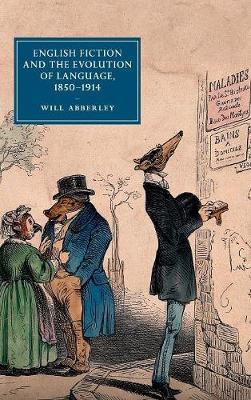Cambridge Studies in Nineteenth-Century Literature and Culture
2 total works
Revealing the web of mutual influences between nineteenth-century scientific and cultural discourses of appearance, Mimicry and Display in Victorian Literary Culture argues that Victorian science and culture biologized appearance, reimagining imitation, concealment and self-presentation as evolutionary adaptations. Exploring how studies of animal crypsis and visibility drew on artistic theory and techniques to reconceptualise nature as a realm of signs and interpretation, Abberley shows that in turn, this science complicated religious views of nature as a text of divine meanings, inspiring literary authors to rethink human appearances and perceptions through a Darwinian lens. Providing fresh insights into writers from Alfred Russel Wallace and Thomas Hardy to Oscar Wilde and Charlotte Perkins Gilman, Abberley reveals how the biology of appearance generated new understandings of deception, identity and creativity; reacted upon narrative forms such as crime fiction and the pastoral; and infused the rhetoric of cultural criticism and political activism.
Victorian science changed language from a tool into a natural phenomenon, evolving independently of its speakers. Will Abberley explores how science and fiction interacted in imagining different stories of language evolution. Popular narratives of language progress clashed with others of decay and degeneration. Furthermore, the blurring of language evolution with biological evolution encouraged Victorians to re-imagine language as a mixture of social convention and primordial instinct. Abberley argues that fiction by authors such as Charles Kingsley, Thomas Hardy and H. G. Wells not only reflected these intellectual currents, but also helped to shape them. Genres from utopia to historical romance supplied narrative models for generating thought experiments in the possible pasts and futures of language. Equally, fiction that explored the instinctive roots of language intervened in debates about language standardisation and scientific objectivity. These textual readings offer new perspectives on twenty-first-century discussions about language evolution and the language of science.

